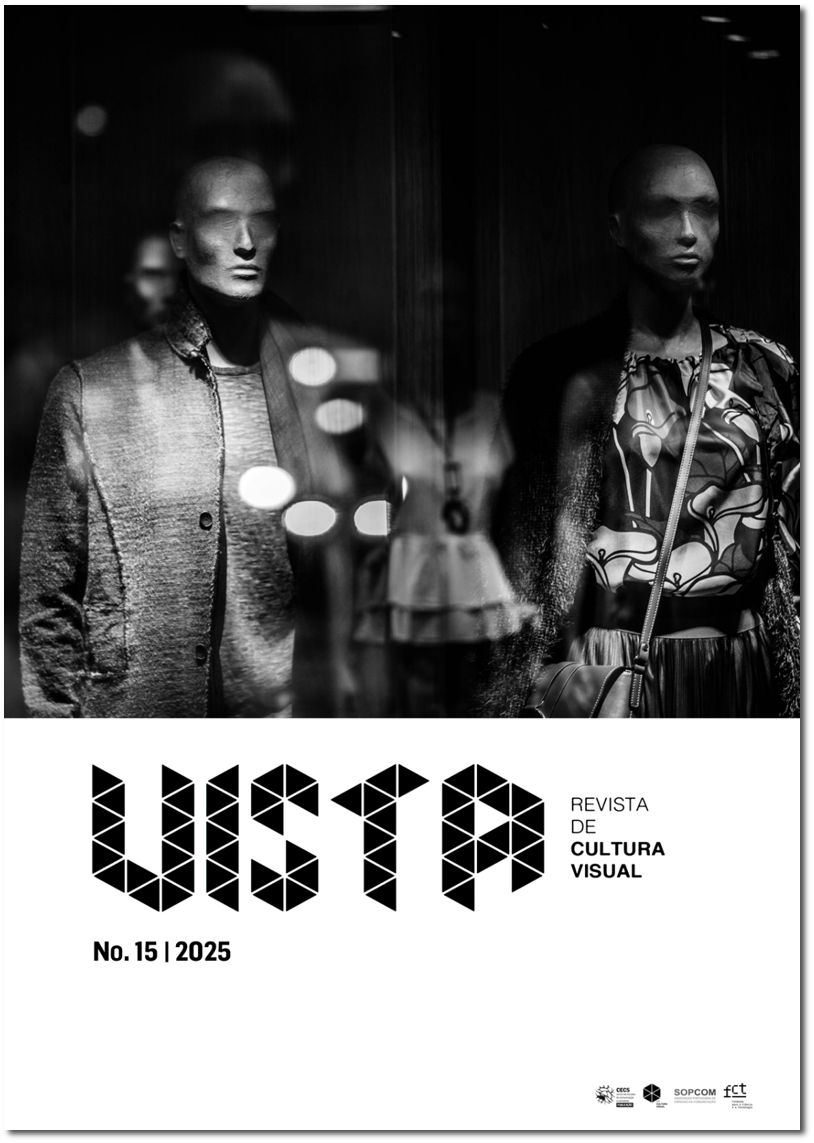Women’s Clothing in Portugal and Goa in the 16th Century: A Comparative Study
DOI:
https://doi.org/10.21814/vista.6275Keywords:
fashion history and culture, Iberian colonial societies, gendered gaze, early modern period, religionAbstract
This paper adopts a comparative approach to 16th-century sources concerning the perception of women through their clothing. It focuses on women in Portugal and Goa within the context of 16th-century Catholic society, using male-authored accounts. Understanding fashion as a marker of cultural belonging, this study examines how religious beliefs and practices influence women’s modes of dress. While Portugal maintained its Christian identity throughout this period, Goa — at the time of the Portuguese arrival — was home to a diversity of religious traditions, particularly Hinduism, which this study emphasises due to the greater availability of sources. As part of the broader Portuguese maritime expansion, Goa experienced processes of cultural exchange that shaped the roles and clothing of women in both territories. Foundational reference works include Fernando Oliveira (1993), who analyses the composition of various garments. However, due to the limited academic focus specifically on women's clothing in this context, the study also draws on recent academic theses, such as that of Pedro Castro Cruz (2023), which examines sumptuary dress across the early modern period. The research follows a historical methodology, using comparative analysis of previously studied documentary sources to pose new interpretative questions. Primary sources include the travel accounts of Jan Huygen van Linschoten (1596/1885a, 1596/1885b) and François Pyrard de Laval (1944), as well as the Extravagant Laws compiled by Duarte Nunes de Leão (1569). This study is original in comparing female clothing at two geographic and cultural extremes of the Portuguese empire, as interpreted through male perspectives.
Downloads
References
Areias, S. P. (2010). A oscilação da silhueta do vestuário da mulher e a revelação do seu corpo na história ocidental. Um gráfico previsível? [Dissertação de mestrado, Universidade Técnica de Lisboa].
Boxer, C. R. (1977). A mulher na expansão ultramarina ibérica: 1415-1815 — Alguns factos, ideias e personalidades (S. Barata, Trad.). Livros Horizonte. (Trabalho original publicado em 1975)
Cruz, P. A. C. (2023). As leis pragmáticas: Estatuto e diferenciação social em Portugal (1340-1762) [Dissertação de mestrado, Universidade do Minho]. RepositóriUM. https://hdl.handle.net/1822/85048
Ferreira, L. G. (2021). Para além de cetins e damascos em seda: Indumentária dos pobres durante o período barroco em Portugal. In V Congreso Internacional do Barroco Iberoamericano: Identidades y redes culturales (pp. 659–665). Editorial Universidad de Granada.
Fialho, M. J. M. (2011). O traje de corte feminino em Portugal da época de D. Manuel I a D. Pedro II [Tese de doutoramento, Universidade NOVA de Lisboa]. Repositório Universidade NOVA. http://hdl.handle.net/10362/12257
Freitas, A. L. F. (2023). Oriente e ocidente em perspetiva: A imagem da mulher oriental na literatura portuguesa quinhentista [Dissertação de mestrado, Universidade da Madeira].
Garcia, J. C. (1986). Os têxteis em Portugal nos séculos XV e XVI. Finisterra. Revista Portuguesa de Geografia, 21(42), 327–344.
Jackson, K. D. (2014). Goa e a orientalidade. In E. V. Machado (Ed.), Goa portuguesa e pós-colonial: Literatura, cultura e sociedade (pp. 13–37). Húmus.
Kamat, P. P. (1994). In search of her story: Woman and the colonial state in the Estado da Índia with reference to Goa. In Congresso internacional: O rosto feminino na expansão portuguesa (pp. 585–611). Comissão para a Igualdade e para os Direitos das Mulheres.
Laval, F. P. de. (1944). Viagem de Francisco Pyrard de Laval (J. H. C. Rivara, Trad., Vol. II). Livraria Civilização.
Leão D. N. (1569). Leis extravagantes/collegidas e relatadas pelo licenciado Duarte Nunez de Liam per mandado do muito alto & muito poderoso Dom Sebastiam Nosso Senhor. Biblioteca Nacional de Portugal
Lourenço, C. M. D. (2010). A visão da mulher asiática no século XVI através do olhar de Duarte Barbosa e de Tomé Pires [Tese de doutoramento, Universidade Aberta]. Repositório Aberto. http://hdl.handle.net/10400.2/1665
Louro, A. D. C. F. (2019). Um casamento aristocrático em 1537: Festas, ostentação e poder em Vila Viçosa [Dissertação de mestrado, Universidade NOVA de Lisboa]. Repositório Universidade NOVA. http://hdl.handle.net/10362/85857
Oliveira, F. (1993). O vestuário português ao tempo da expansão – Séculos XV e XVI. Editorial do Ministério da Educação.
Pinto, C. A. (2020). Vestuário, género e doença no regimento de 1504. In E. M. Alberto (Ed.), Hospital Real de Todos-os-Santos: Lisboa e a saúde (pp. 533–539). Câmara Municipal de Lisboa/Santa Casa da Misericórdia. http://hdl.handle.net/10362/130643
Riello, G. (2013). Da idade média aos nossos dias (C. A. de Brito, Trad.). Edições Texto & Grafia. (Trabalho original publicado em 2012)
Sá, I. D. G. (1994). Entre Maria e Madalena: A mulher como sujeito e objecto de caridade em Portugal e nas colónias (séculos XVI-XVIII). In Congresso internacional: O rosto feminino na expansão Portuguesa (pp. 329–337). Comissão para a Igualdade e para os Direitos das Mulheres.
Souza, A. R. (2016). Legislação, sexualidade e prostituição: Práticas jurídicas no Portugal moderno. Ars Historica, (13), 62–77.
Souza, V. (2018). Teatro e cotidiano no Portugal quinhentista: Corpo e vestuário nas peças da escola vicentina. In M. Motta, R. Pereira, & T. dos Reis (Eds.), Anais do Encontro Internacional e XVIII Encontro de História da Anpuh-Rio: História e parcerias (pp. 1–7). Associação Nacional de História; Proprietas; Universidade Federal Fluminense.
van Linschoten, J. H. V. (1885). The voyage of Jan Huygen van Linschoten to the East Indies (A. C. Burnell, Trad., Vol. I). Hakluyt Society. (Trabalho original publicado em 1596)
van Linschoten, J. H. V. (1885). The voyage of Jan Huygen van Linschoten to the East Indies (P. A. Tiele, Trad., Vol. II). Hakluyt Society. (Trabalho original publicado em 1596)
Downloads
Published
How to Cite
Issue
Section
License
Copyright (c) 2025 Rafaela de Vasconcelos

This work is licensed under a Creative Commons Attribution 4.0 International License.
Authors own the copyright, providing the journal with the right of first publication. The work is licensed under a Creative Commons Attribution 4.0 International License.













